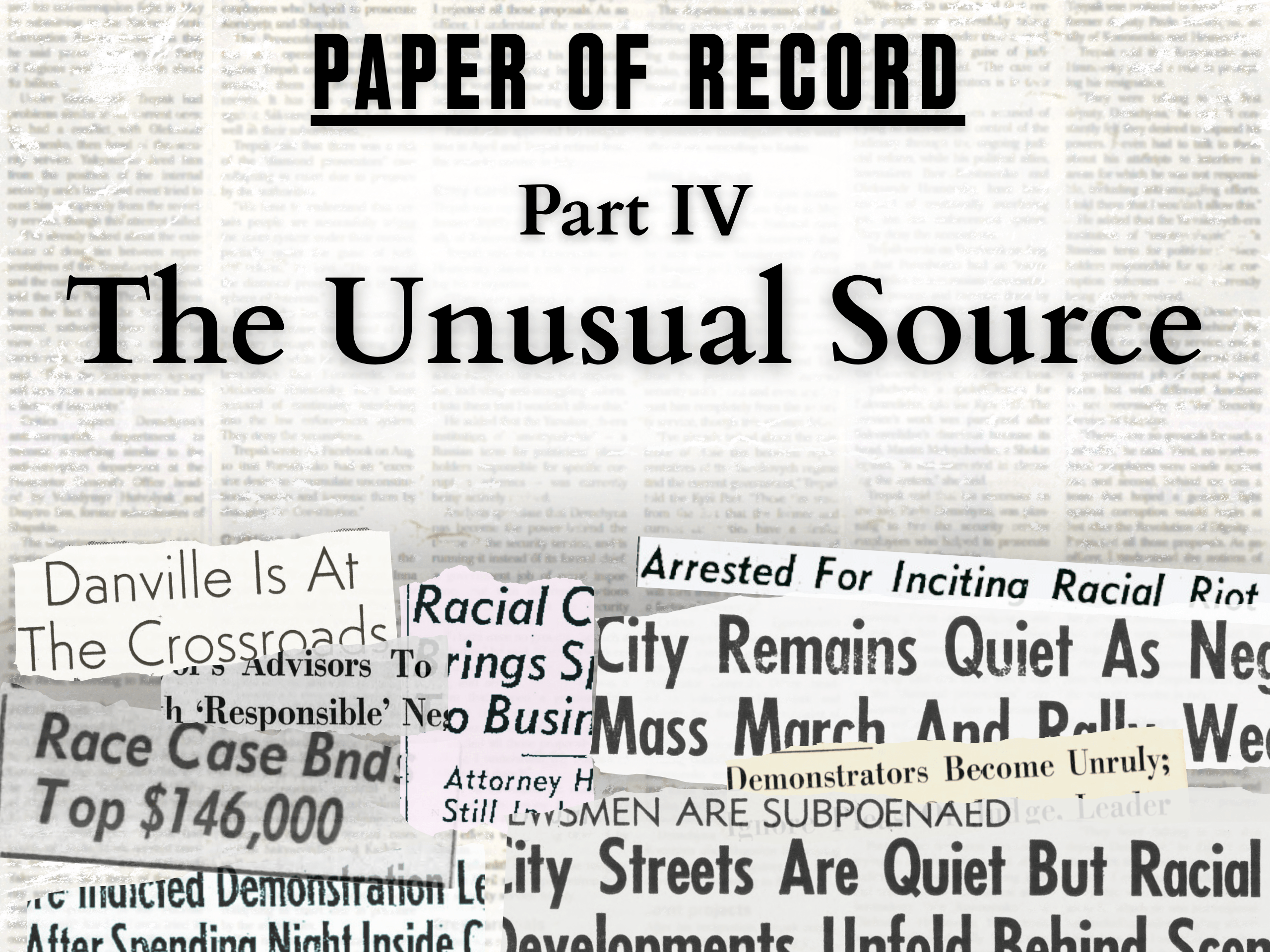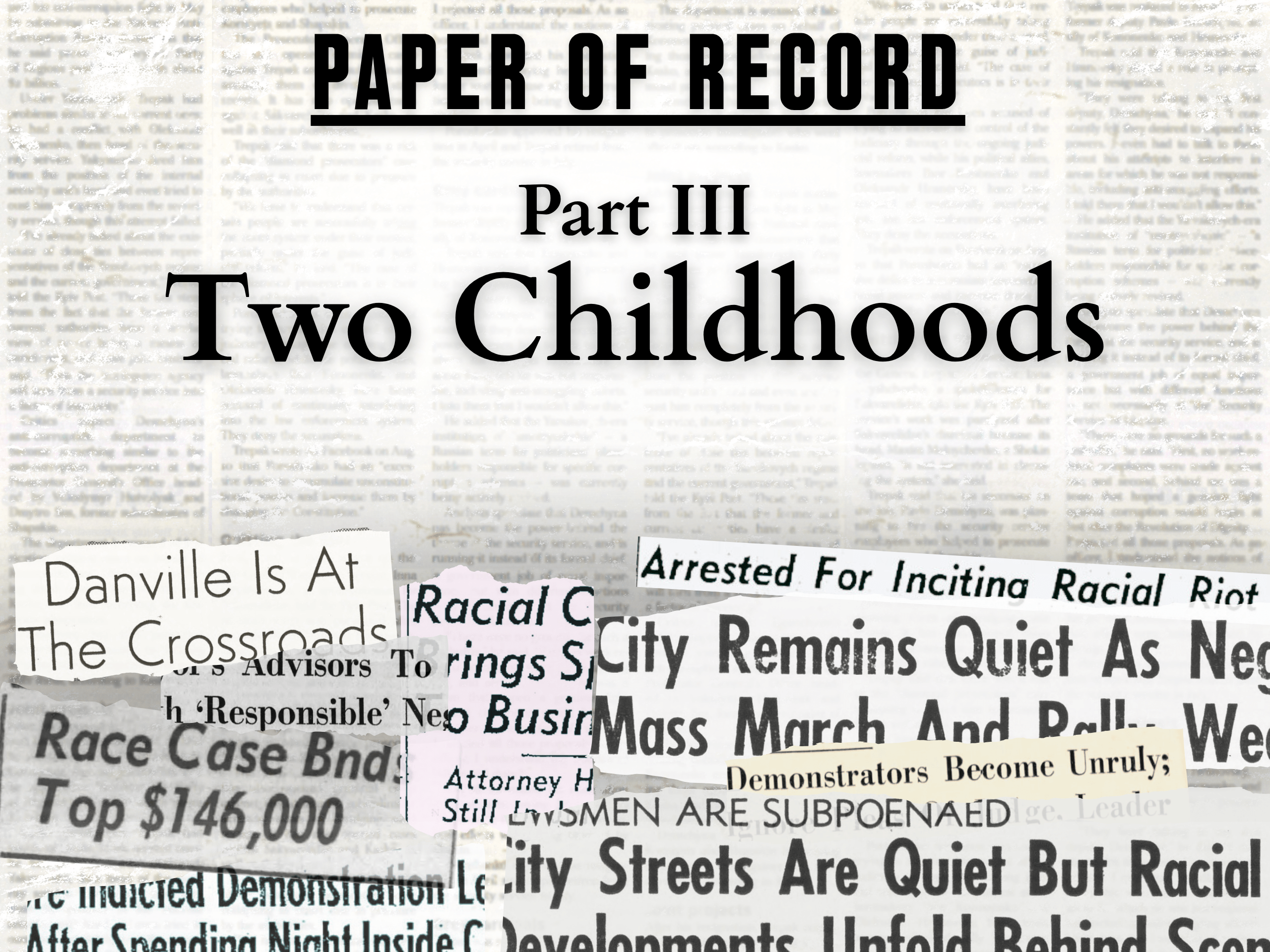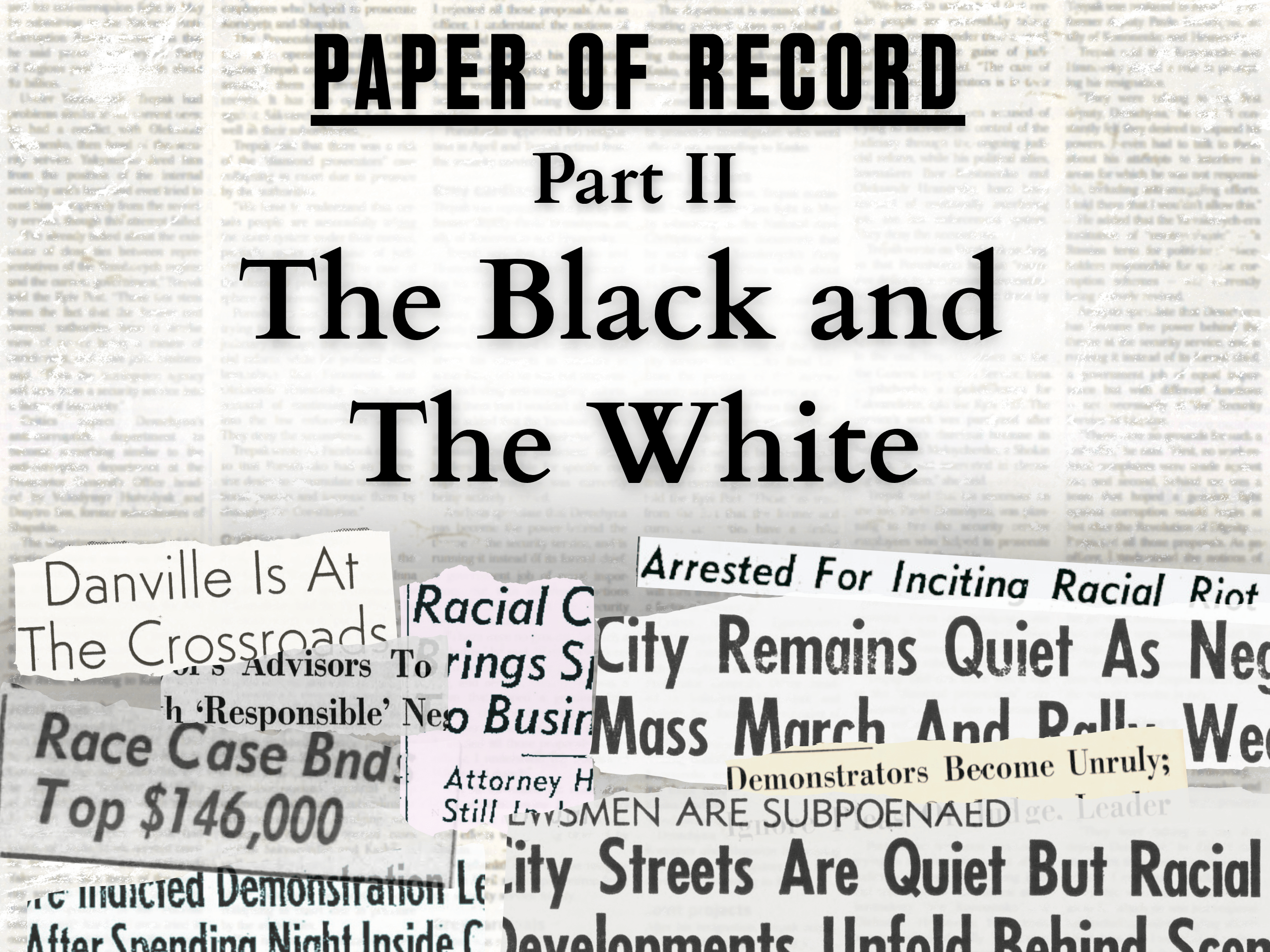What is “Paper of Record”?
In June 1963, protestors flooded the streets of Danville, Virginia, demanding equal rights and an end to racial injustice. But if you opened the city’s daily newspaper that week, you’d barely recognize the story being told.
This Redbird story series examines how local news outlets covered — and in many cases, distorted — Danville’s civil rights movement. Reporter Grace Mamon uncovers the stark contrast between two kinds of journalism: one that echoed official narratives and dismissed protestors as lawbreakers, and another, a lone weekly paper, that sought to print what demonstrators called “the truth.”
Through archival research, personal accounts, and media analysis, this four-part investigation explores the power of the press — what it chose to amplify, what it chose to ignore, and the lasting impact of those choices. It’s a story about the role journalism played during a pivotal moment in Danville’s history — and how that legacy continues to shape our understanding of truth, justice, and responsibility in the media.
This is not just a look back. It’s a conversation about how far journalism has come — and how far it still has to go.
Explore the series
62 years after Danville’s civil rights movement, both the city and the local newspapers have evolved
If mainstream media coverage in 1963 had looked different, perhaps Danville’s civil rights movement would have remained in the public consciousness in the years afterward, one journalism professor said.
Keep readingHe saw his dad ostracized for reporting on civil rights. She grew up to be the Register’s first Black reporter.
They both came of age in Danville in the 1960s. His father was a white publisher who took a stand on civil rights; her father was one of the city’s first Black reporters.
Keep readingStraightforward reporting on protests set a paper apart — and caused problems for its publisher
The Commercial Appeal quoted local and national civil rights leaders. It also covered goings-on in Danville’s Black neighborhoods.
Keep readingCivil rights protesters trusted one Danville paper — and it wasn’t the daily
The “paper of record” could make — or bury — history. But what happens when there’s another paper in town?
Keep reading





